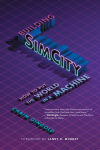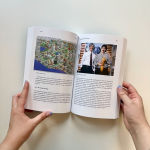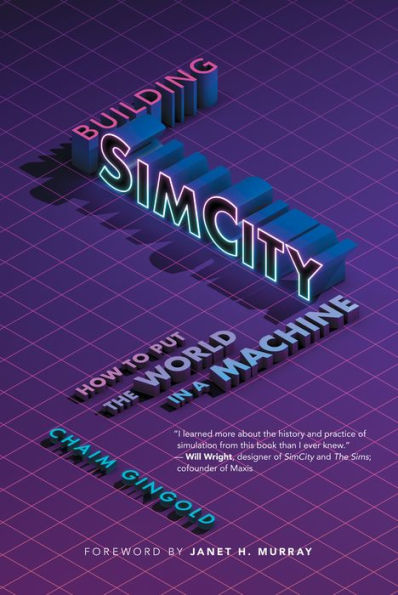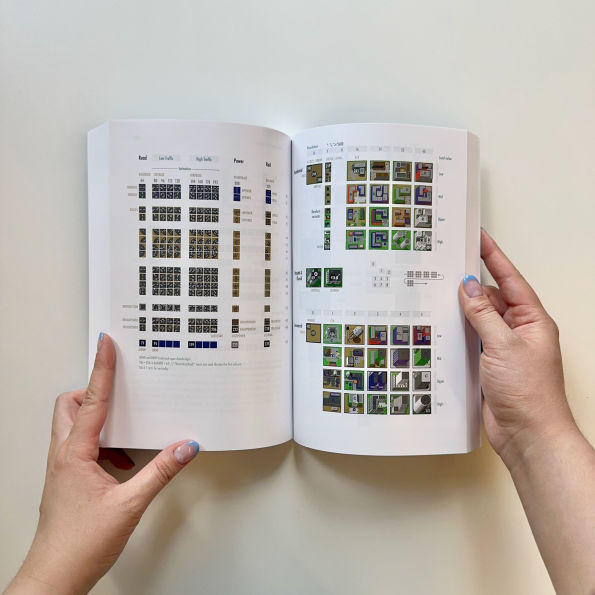Building SimCity: How to Put the World in a Machine
A deep dive into the trailblazing simulation game SimCity, situating it in the history of games, simulation, and computing.
Building SimCity explores the history of computer simulation by chronicling one of the most influential simulation games ever made: SimCity. As author Chaim Gingold explains, Will Wright, the visionary designer behind the urban planning game, created SimCity in part to learn about cities, appropriating ideas from traditions in which computers are used as tools for modeling and thinking about the world as a complex system. As such, SimCity is a microcosm of the histories and cultures of computer simulation that engages with questions, themes, and representational techniques that reach back to the earliest computer simulations.
Gingold uses SimCity to explore a web of interrelated topics in the history of technology, software, and simulation, taking us far and wide—from the dawn of programmable computers to miniature cities made of construction paper and role-play. An unprecedented history of Maxis, the company founded to bring SimCity to market, the book reveals Maxis’s complex relations with venture capitalists, Nintendo, and the Santa Fe Institute, which shaped the evolution of Will Wright’s career; Maxis’s failure to back The Sims to completion; and the company’s sale to Electronic Arts.
A lavishly visual book, Building SimCity boasts a treasure trove of visual matter to help bring its wide-ranging subjects to life, including painstakingly crafted diagrams that explain SimCity’s operation, the Kodachrome photographs taken by Charles Eames of schoolchildren making model cities, and Nintendo’s manga-style “Dr. Wright” character design, just to name a few.
1143849290
Building SimCity explores the history of computer simulation by chronicling one of the most influential simulation games ever made: SimCity. As author Chaim Gingold explains, Will Wright, the visionary designer behind the urban planning game, created SimCity in part to learn about cities, appropriating ideas from traditions in which computers are used as tools for modeling and thinking about the world as a complex system. As such, SimCity is a microcosm of the histories and cultures of computer simulation that engages with questions, themes, and representational techniques that reach back to the earliest computer simulations.
Gingold uses SimCity to explore a web of interrelated topics in the history of technology, software, and simulation, taking us far and wide—from the dawn of programmable computers to miniature cities made of construction paper and role-play. An unprecedented history of Maxis, the company founded to bring SimCity to market, the book reveals Maxis’s complex relations with venture capitalists, Nintendo, and the Santa Fe Institute, which shaped the evolution of Will Wright’s career; Maxis’s failure to back The Sims to completion; and the company’s sale to Electronic Arts.
A lavishly visual book, Building SimCity boasts a treasure trove of visual matter to help bring its wide-ranging subjects to life, including painstakingly crafted diagrams that explain SimCity’s operation, the Kodachrome photographs taken by Charles Eames of schoolchildren making model cities, and Nintendo’s manga-style “Dr. Wright” character design, just to name a few.
Building SimCity: How to Put the World in a Machine
A deep dive into the trailblazing simulation game SimCity, situating it in the history of games, simulation, and computing.
Building SimCity explores the history of computer simulation by chronicling one of the most influential simulation games ever made: SimCity. As author Chaim Gingold explains, Will Wright, the visionary designer behind the urban planning game, created SimCity in part to learn about cities, appropriating ideas from traditions in which computers are used as tools for modeling and thinking about the world as a complex system. As such, SimCity is a microcosm of the histories and cultures of computer simulation that engages with questions, themes, and representational techniques that reach back to the earliest computer simulations.
Gingold uses SimCity to explore a web of interrelated topics in the history of technology, software, and simulation, taking us far and wide—from the dawn of programmable computers to miniature cities made of construction paper and role-play. An unprecedented history of Maxis, the company founded to bring SimCity to market, the book reveals Maxis’s complex relations with venture capitalists, Nintendo, and the Santa Fe Institute, which shaped the evolution of Will Wright’s career; Maxis’s failure to back The Sims to completion; and the company’s sale to Electronic Arts.
A lavishly visual book, Building SimCity boasts a treasure trove of visual matter to help bring its wide-ranging subjects to life, including painstakingly crafted diagrams that explain SimCity’s operation, the Kodachrome photographs taken by Charles Eames of schoolchildren making model cities, and Nintendo’s manga-style “Dr. Wright” character design, just to name a few.
Building SimCity explores the history of computer simulation by chronicling one of the most influential simulation games ever made: SimCity. As author Chaim Gingold explains, Will Wright, the visionary designer behind the urban planning game, created SimCity in part to learn about cities, appropriating ideas from traditions in which computers are used as tools for modeling and thinking about the world as a complex system. As such, SimCity is a microcosm of the histories and cultures of computer simulation that engages with questions, themes, and representational techniques that reach back to the earliest computer simulations.
Gingold uses SimCity to explore a web of interrelated topics in the history of technology, software, and simulation, taking us far and wide—from the dawn of programmable computers to miniature cities made of construction paper and role-play. An unprecedented history of Maxis, the company founded to bring SimCity to market, the book reveals Maxis’s complex relations with venture capitalists, Nintendo, and the Santa Fe Institute, which shaped the evolution of Will Wright’s career; Maxis’s failure to back The Sims to completion; and the company’s sale to Electronic Arts.
A lavishly visual book, Building SimCity boasts a treasure trove of visual matter to help bring its wide-ranging subjects to life, including painstakingly crafted diagrams that explain SimCity’s operation, the Kodachrome photographs taken by Charles Eames of schoolchildren making model cities, and Nintendo’s manga-style “Dr. Wright” character design, just to name a few.
50.0
In Stock
5
1

Building SimCity: How to Put the World in a Machine
486
Building SimCity: How to Put the World in a Machine
486
50.0
In Stock

Product Details
| ISBN-13: | 9780262547482 |
|---|---|
| Publisher: | MIT Press |
| Publication date: | 06/04/2024 |
| Series: | Game Histories |
| Pages: | 486 |
| Sales rank: | 199,205 |
| Product dimensions: | 6.00(w) x 9.00(h) x 0.80(d) |
About the Author
What People are Saying About This
From the B&N Reads Blog









